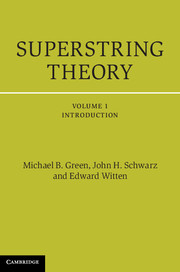5 - Space-time supersymmetry in string theory
Published online by Cambridge University Press: 05 September 2012
Summary
The description of superstrings given in chapter 4 suffers from one striking drawback. It is extremely difficult to understand the origins of spacetime supersymmetry. Bosonic strings are described by choosing one set of boundary conditions and fermionic ones by choosing another set. Then, lo and behold, there is a symmetry relating the two sets of states. It is certainly necessary to have this symmetry, as we have already argued, to have consistent interactions of the gravitino field contained in the massless closed-string multiplet. We also showed that when the GSO conditions are imposed there are an equal number of bosons and fermions at every mass level, as is necessary for a linear realization of the supersymmetry.
In this chapter we describe a formalism that leads to the same theory in a way that makes supersymmetry manifest. We begin by describing a covariant world-sheet action with space-time supersymmetry. While it seems to be difficult to quantize this action covariantly, it can be quantized in light-cone gauge. Though the resulting formalism is not manifestly Lorentz invariant, it can be shown to be Lorentz invariant in D = 10. Supersymmetry is obvious; the GSO conditions are automatically built in from the outset without having to make any truncations; bosonic and fermionic strings are unified in a single Fock space.
- Type
- Chapter
- Information
- Superstring Theory25th Anniversary Edition, pp. 249 - 290Publisher: Cambridge University PressPrint publication year: 2012



